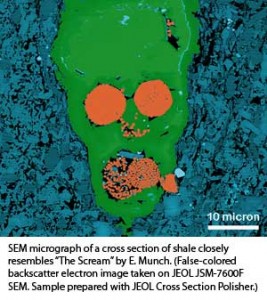Alice Bell’s April 29,2014 posting for the Guardian science blogs explores the relationship between money from oil companies to culture, especially science culture (Note: A link has been removed),
Question: What has science got in common with opera? Answer: They are both cultural pursuits favoured by the oil industry.
This comes via the NGO Platform [elsewhere this organization is called Platform London] who produced a new infographic this week, visualising their research exploring how much oil money goes into London’s galleries and museums.
The graphic leads with the Royal Opera House, the Tate, the National Portrait Gallery and the British Museum, and you might have seen coverage of the protest at the Viking exhibition this weekend. But I noticed something interesting when I scrolled down. Because what’s at the centre of the Shell/ BP cultural sponsorship Venn diagram, taking money from both companies? Turns out, apart from the Royal Opera House, they are all scientific institutions: the Science Museum, the Natural History Museum and the National Maritime Museum.
Here’s the infographic,
![Infographic from Platform London illustrating how oil moneyflows through national cultural institutions in the UK. Photograph: Hannah Davey, Mel Evans and Platform London/Platform London [downloaded from http://platformlondon.org/p-publications/artoilinfographic/]](http://www.frogheart.ca/wp-content/uploads/2014/05/UK_OilMoneyCulture-212x300.jpg)
Infographic from Platform London illustrating how oil moneyflows through national cultural institutions in the UK. Photograph: Hannah Davey, Mel Evans and Platform London/Platform London [downloaded from http://platformlondon.org/p-publications/artoilinfographic/]
For the last two and a half years Tate has been involved in a Freedom of Information struggle over its refusal to disclose information over details and discussions over its sponsorship relationship with BP. Despite a ruling from the Information Commissioner in May that Tate was breaking information law on a number of counts in not revealing information regarding to sponsorship discussions, Tate has appealed and the tribunal hearing is likely to place in September 2014.
Meanwhile, Bell focuses on the science portion of this ‘culture equation’,
I imagine members of the scientific community will feel slightly uncomfortable to see themselves nestled there with such a traditionally elitist space as the Royal Opera House. Is that really how they want to be used? Is that really what museums of science are for?
Science often sees itself as the poor cousin, culturally speaking, so I guess there will also be people pleased to see science at the nexus of an exercise in mapping cultural power. Science may enjoy huge political, financial and economic support elsewhere, but museums of science and technology often feel less popular, slightly awkward and unglamorous compared to art galleries and theatres. … You might also argue it’s a class thing; science just isn’t traditionally posh enough, though again maybe that is changing. Or maybe we unfairly dismiss science museums as kids stuff (as if that isn’t important in itself).
I was fascinated to find this little gem in Bell’s piece,
That the oil industry likes hanging with science isn’t news. To take a topical example, the latest space at the Science Museum to come baring the Shell logo is the new exhibition on James Lovelock. Though it doesn’t say so in the exhibition itself, Lovelock has worked for Shell. Indeed he is an advocate of the company, writing in his 2000 book, Homage to Gaia:
“My experiences with Shell left me firmly with the impression that they are neither stupid nor villains. On the contrary I know of no other human agency that plans as far ahead or considers the environment more closely” (page 162-3 of 2000 edition of Homage to Gaia)
Lovelock and his ‘Gaia’ concept were much beloved and discussed in some of my (Canadian) university courses in the late ’80s and early ’90s and none of my professors ever mentioned Lovelock’s relationship to Shell.
Getting back to the infographic and the relationship between oil money and culture, there was a bit of scandal in 2012 in Canada regarding the sponsorship of the Canada Museum of Science and Technology’s exhibition “Energy: Power to Choose,” I made note of it in a June 13, 2012 posting (Sex in Ottawa (Canada), energy and corporate patronage, and war anniversaries) where I looked at that scandal, another example of corporate cultural patronage, and an example of an attempted government ‘intervention’ in a museum ‘sex show’, all in aid of ‘painting a picture’ of some the challenges associated with cultural production.
It’s a confounding situation at times. For example, the Du Maurier Foundation (in Canada) funded a diverse array of arts and some very exciting work was a shown as a consequence of that generosity. Unfortunately, it was a cigarette company and eventually, Du Maurier shut down its arts funding (I think it became illegal in the early 2000s) and that loss is felt to this day in 2014.
I recently wrote a piece about oil and Canada (scroll down about 40% of the way) in the context of a May 6, 2014 posting about the need for more research on oil cleanup technologies.

